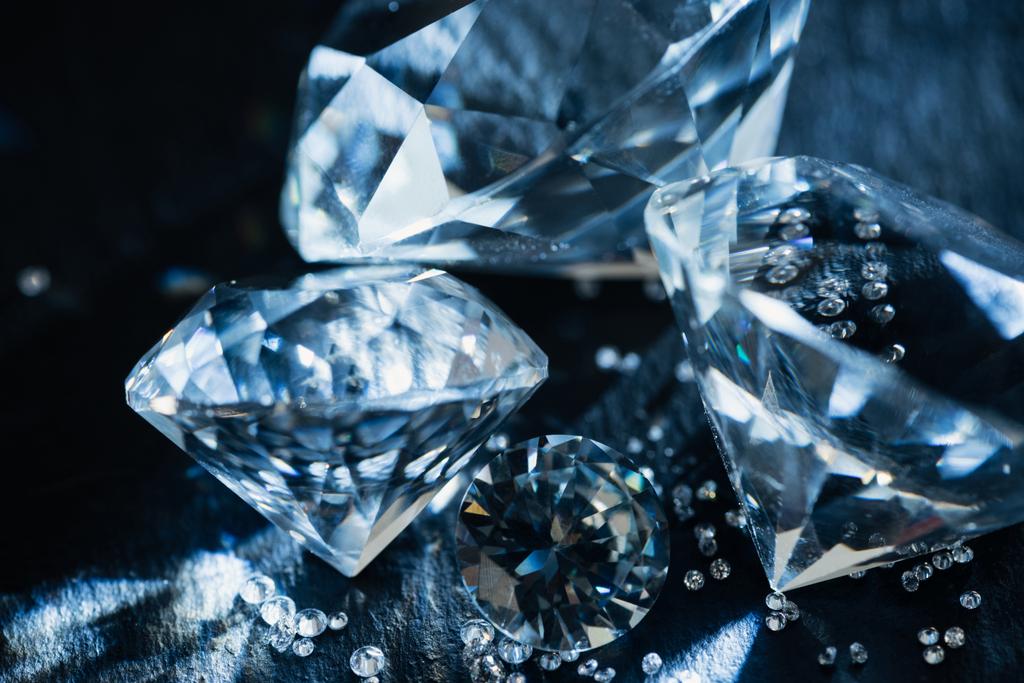August 22, 2023
Admin
3012

“Maximum in rebus humanis, non solum Inter gemmas, pretium habet adamas.” If already in the first century a.d. Pliny the Elder (23-79 A.D.) in his Naturalis Historia describes the diamond so enthusiastically there must be a reason. Indeed, there are many because the diamond for its properties (in particular transparency, hardness and rarity) is considered not only the king of precious stones but of all minerals. It is the hardest of all that can be found in nature. Myths and legends from ancient Greece believed diamonds were "splinters of stars fallen to earth", according to others they were "the tears of the gods". Adamas, invincible. And this must have appeared to the first who casually found these luminous stones on the bed of a river or among the alluvial debris coming, above all due to volcanic activity, from depths between 130 and 200 km below the earth's surface and where they had formed at temperatures which usually hover around 1,300° C with a pressure of about 70,000 atmospheres. If these parameters are different, the diamond risks remaining just something else. The environmental conditions are decisive as are the training times. If the diamond is not exposed to the air in a fairly short time, it slowly transforms, at 1,200°C, into graphite which is still carbon but, in short, something different. And it is for this reason that the ascent to the surface must take place very quickly so that the rapid cooling and reduction of pressure do not give the carbon atoms time to change their arrangement and consequently their attraction to each other, which is very strong in diamond and weak in graphite. What makes diamond the hardest and most resistant exists is precisely the cohesion of its atoms. To all this we must add the particularity of the matter within which the transformation of carbon takes place as not all soils are suitable for its formation. A large number of combinations and details with a very low degree of probability of fitting into each other make it, among other things, so rare and special. There is a fact that can give you a very clear idea of what we are saying. When we buy a diamond of 0.10 ct (one tenth of a carat) in a jewelery shop, 20 tons of soil have been moved, worked and treated on average (there is obviously a difference between one mine and another) to obtain that small stone. . But even once formed, it doesn't necessarily end up on the finger or around the neck of some beautiful lady. The quality between one stone and another varies greatly: only 20% of all diamonds become gem quality and end up in the showcase of a jeweler, the remaining 80% is destined for industry. The history of the diamond is ancient, even if not as old as that of gold. We will never know exactly when the first diamond was discovered but we know for sure that it was in India, which remained until the 18th century, when the Brazilian deposits of Minas Gerais, the only producing country, were discovered. Nowadays the major centers of extraction are found in Australia, South Africa, Botswana, Namibia and the Soviet Union. From written sources we learn that already in 300 BC. there was a thriving diamond trade in the Orient and taxes were paid for commercial transactions involving this precious mineral. Already in those times the most well-formed and transparent diamonds had a particular value, and those with a perfect octahedral shape belonged by right to the rulers and were not exported. They were mined near the city of Golconda, today's Hyderabad, a city so famous for precious gems that its name has long been synonymous with wealth in the West. Just in that period the expeditions to India of Alexander the Great contributed not a little to its greater diffusion in the West. We have already said "Adamas", invincible, as the Greeks called it due to its hardness, and from this derives our word "diamond". There is a particular scale which determines the hardness of minerals and which takes its name from its creator, the Austrian Friedrich Mohs (1773-1839), where, in a succession of values from one to ten, the ten is obviously occupied by the diamond and , in second place, with a value of nine, we find corundum (ruby and sapphire to be clear). But the difference between one and the other is not as great as it might seem, because diamond is 140 times harder than corundum. Its extreme hardness has also prevented its cutting for centuries and therefore its greater valorisation. Only in the 15th century was it discovered that the hardness of diamond is not equal in all directions but has what is termed “directional” (or vectorial) hardness, meaning that in some directions the hardness of the material is slightly lower than in others . From here on the diamond began to be cut and this naturally gave its marketing a further boost. The first cuts were so simple that they were sometimes almost indistinguishable from the rough, but they gradually became more complex and with more and more facets that further increased the light that escaped from the gem. Thus began the long and fascinating history of diamond cutting, so interesting and vast as to deserve a separate chapter, it will in fact be the subject of one of our next blogs.
Category:
LATEST PRODUCTS
RELATED POST
Collection
Contact Us
Call Us
055 068 0801Write us an email
info@toscanaoro.itToscana Oro & A. srl © 2025. All rights reserved. TOSCANA ORO & A S.R.L. VIA GUIDO MONACO 26C 50144 FIRENZE (FI) | P.IVA 06338360487 - Privacy Policy - Cookie Policy - Termini d'Uso